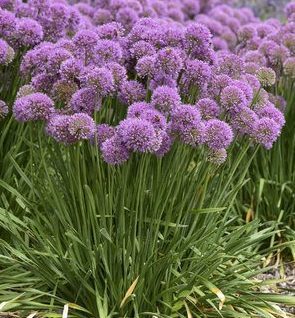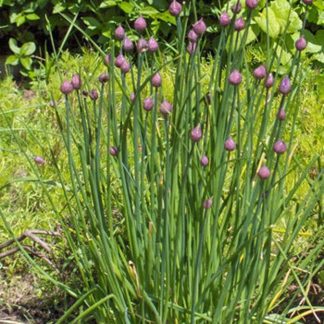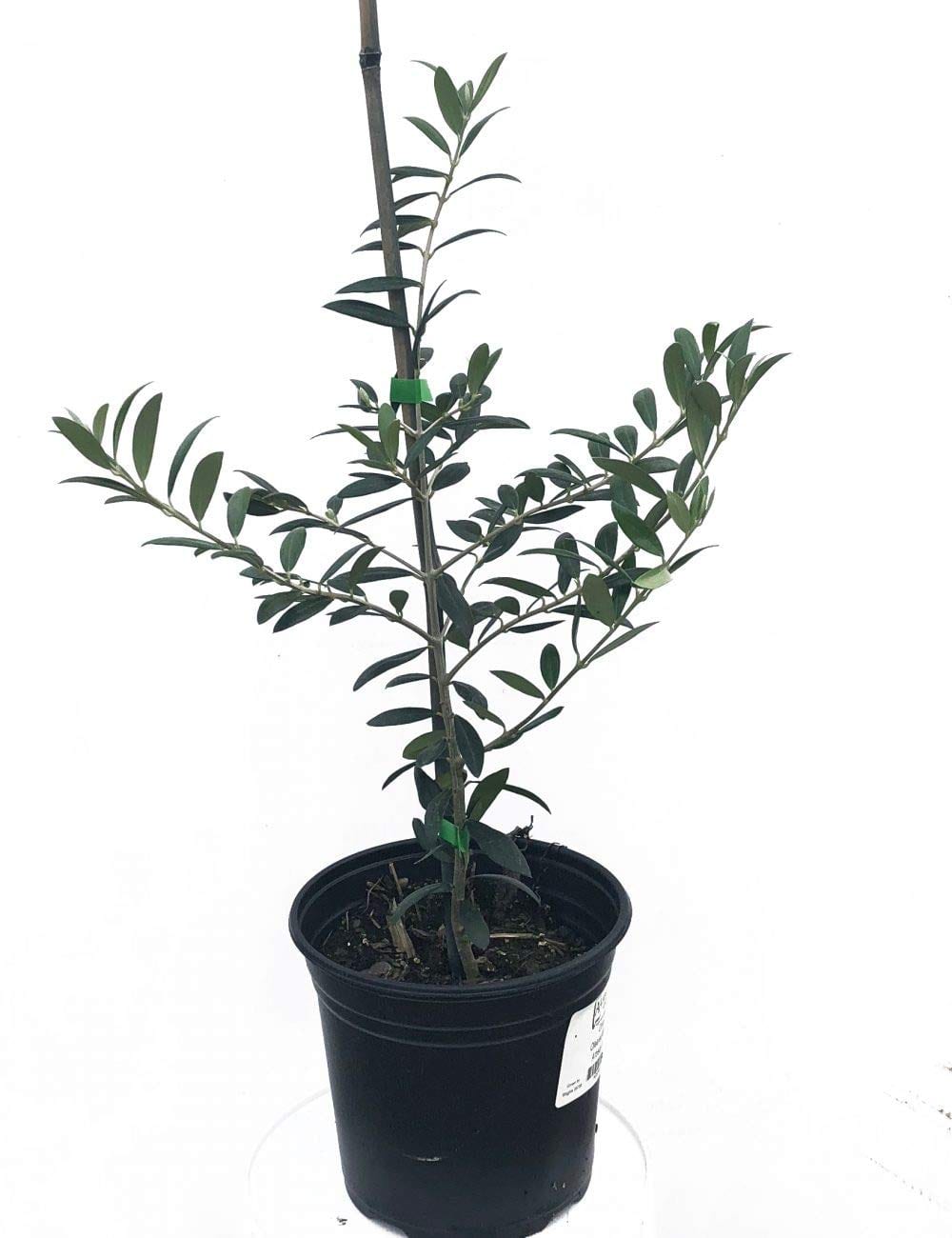The Allure of Black Flowers: Mysterious Beauties for Your Garden
Black flowers stop us in our tracks. They look rich, moody, and bold. They make green look greener and white look brighter. They add drama in one move. In other words, a single black bloom can turn a plain bed into a story.
But here is a helpful truth. Most “black” flowers are very deep shades of purple, maroon, or red. Our eyes read them as black, especially in shade or at dusk. This is good news. It means we have many choices. It also means we can shape the look with light, neighbors, and backdrop. With a few smart moves, we build a dark, elegant garden that still feels alive and warm.
We will walk through why black flowers work, which ones to grow, and how to design with them. We will talk care, color partners, and common mistakes. We will plan a full season, from late winter hellebores to fall dahlias. Simple steps. Big impact. That is our path.
Why Dark Blooms Work So Well
Black flowers carry mystery. They whisper, not shout. They draw us closer. This is powerful in design. When we slow down to look, we notice edges, velvety petals, and subtle shine. We feel texture. We see depth. A dark bloom is not flat. It is layered and plush.
There is also contrast. Black makes bright colors pop. A white daisy beside a black pansy looks crisp. Chartreuse leaves beside a black calla feel electric. Silver foliage beside a near-black tulip looks like moonlight. But most of all, black creates mood. It can be modern, classic, or wild. It fits a cottage border, a formal pot, or a sleek porch. It can echo a Gothic vibe or a minimalist one. It goes where you want it to go.
Light matters. In strong noon sun, black blooms can look harsh. In morning or evening light, they glow. In light shade, they look the most black. Backgrounds help too. Dark blooms vanish against deep brown mulch or dark fences. They stand out against pale gravel, lime foliage, or light stone. Instead of hiding them, give them a stage.
Form and finish matter. Simple, satin petals feel sleek. Ruffled, peony-like blooms feel luxurious. Spiky forms, like salvias or irises, add energy. Round forms, like dahlias, feel lush. Mix a few forms and you get motion without chaos. After more than one season, you will learn which forms your eye loves best.
Finally, black blooms make a small garden feel curated. One well-placed plant can do the work of many. That saves time and money, and it keeps beds clean and clear. You edit more. You stress less. You enjoy more.
Black Flowers to Try Now
Below you’ll find a mix of stars. Some are easy annuals. Some are trusty perennials. Some are bulbs for a seasonal show. Pick a few for spring, summer, and fall. Mix textures. Leave room for foliage allies. Then watch the drama unfold.
Tulip ‘Queen of Night’ (and ‘Paul Scherer’)
- Type: Spring bulb
- Look: Deep, velvety petals that read as black from a few steps away
- Height: 18–24 inches
- Light: Full sun to light shade
- Notes: Plant bulbs in fall in well-drained soil. Group in clumps of 7–15 for a strong show. Pair with white tulips or pale daffodils for crisp contrast.
Iris ‘Before the Storm’ (Bearded Iris)
- Type: Perennial rhizome
- Look: Inky standards and falls with a soft sheen
- Height: 30–36 inches
- Light: Full sun
- Notes: Needs sharp drainage. Plant rhizomes at soil level. Divide every 3–4 years. Pair with silver artemisia or lavender to brighten the clump.
Hellebore ‘Onyx Odyssey’ (Lenten Rose group)
- Type: Evergreen perennial
- Look: Cup-shaped, near-black blooms in late winter to early spring
- Height: 12–18 inches
- Light: Part shade
- Notes: Loves rich, well-drained soil. Long bloom window when little else flowers. Underplant with snowdrops or ferns for a soft woodland feel.
Hyacinth ‘Dark Dimension’
- Type: Spring bulb
- Look: Glossy, deep spikes that scent the path
- Height: 8–12 inches
- Light: Full sun to part shade
- Notes: Great in pots by doors where you can enjoy the perfume. Mix with pale pansies for a soft edge.
Viola ‘Molly Sanderson’ (Black Viola)
- Type: Cool-season annual or short-lived perennial
- Look: True near-black faces with sunny centers
- Height: 6–8 inches
- Light: Sun to light shade (prefers cool weather)
- Notes: Ideal for spring or fall planters. Deadhead for repeat blooms. Tuck along paths for tiny bursts of shadow and shine.
Petunia ‘Black Velvet’
- Type: Warm-season annual
- Look: Velvety, funnel-shaped flowers that soak up light
- Height/Spread: 8–12 inches tall, 12–24 inches wide
- Light: Full sun
- Notes: Feed lightly and trim mid-summer to keep full. Stunning in a container with lime sweet potato vine and white verbena.
Calla Lily ‘Black Star’ or ‘Black Forest’ (Zantedeschia)
- Type: Tender bulb/rhizome (often grown as annual or lifted for winter)
- Look: Sleek, near-black spathes; glossy leaves
- Height: 12–24 inches
- Light: Sun to part shade
- Notes: Loves even moisture and good drainage. Great for modern pots. Let foliage yellow before lifting corms in cold regions.
Dahlia ‘Arabian Night’ (and other dark cultivars)
- Type: Tender tuber
- Look: Deep, wine-black petals; formal or semi-formal forms
- Height: 3–4 feet
- Light: Full sun
- Notes: Stake early. Deadhead for constant bloom. Lift tubers after frost in cold zones. Incredible for cutting with white cosmos and eucalyptus.
Cosmos atrosanguineus (Chocolate Cosmos)
- Type: Tender perennial often treated as an annual
- Look: Velvet, dark red-black daisies; cocoa scent in warm evenings
- Height: 18–24 inches
- Light: Full sun
- Notes: Needs lean, well-drained soil. Too much fertilizer makes leaves, not flowers. Perfect in a moon-garden where scent carries at night.
Scabiosa ‘Black Knight’ (Pincushion Flower)
- Type: Annual or short-lived perennial depending on climate
- Look: Deep, inky buttons on wiry stems
- Height: 24–36 inches
- Light: Full sun
- Notes: Excellent cut flower. Attracts pollinators. Pairs well with airy grasses and pale yarrow.
Aquilegia ‘Black Barlow’ (Columbine)
- Type: Perennial
- Look: Spurless, double blooms in deep, dark maroon-black
- Height: 24–36 inches
- Light: Sun to part shade
- Notes: Self-sows politely. Lovely in cottage borders with foxgloves and ferns. Avoid heavy heat stress with afternoon shade.
Hollyhock ‘Nigra’
- Type: Biennial or short-lived perennial
- Look: Tall spires of almost-black saucers with soft eyes
- Height: 5–8 feet
- Light: Full sun
- Notes: Stake if windy. Allow some seed to mature for next year’s show. A classic behind pale roses or white picket fences.
Rose ‘Black Baccara’ or ‘Black Magic’
- Type: Hybrid tea
- Look: Buds and petals that move from deep burgundy to black cherry
- Height: 3–5 feet
- Light: Full sun
- Notes: Roses love sun, air, and steady water. Mulch to keep roots cool. Stunning in bouquets with white lisianthus.
Iris germanica (near-black cultivars beyond ‘Before the Storm’)
- Type: Perennial
- Look: Glossy falls and standards in ink tones
- Notes: Mix several black irises with a single pale yellow for a simple, high-impact palette.
Nigella ‘Midnight’ (Love-in-a-Mist)
- Type: Annual
- Look: Smoky, deep flowers with fine, lacy foliage
- Height: 12–18 inches
- Light: Full sun
- Notes: Direct-sow. Nice seedpods for drying. Good filler around strong black focal blooms.
Bat Flower (Tacca chantrieri)
- Type: Tropical perennial (indoor/outdoor container in cool zones)
- Look: Wild, bat-like “wings” in near-black with whisker-like bracts
- Height: 2–3 feet
- Light: Bright, indirect light or dappled shade
- Notes: Lovers of humidity. A conversation piece for shaded patios or bright bathrooms.
Zantedeschia rehmannii hybrids (deep forms)
- Type: Tender rhizome
- Notes: For a softer black look, blend with pewter heuchera and white bacopa.
Foliage Allies (not flowers, but perfect partners):
- Black Mondo Grass (Ophiopogon ‘Nigrescens’): True black blades. Great edging along pale stone.
- Heuchera ‘Obsidian’: Dark, glossy leaves to echo blooms.
- Aeonium ‘Zwartkop’: Sculptural rosettes for pots in mild climates.
- Dusty Miller (Senecio cineraria): Silver that makes black read darker.
- Sweet Potato Vine ‘Margarita’: Chartreuse trails that light the scene.
Quick Design Recipes (copy-ready):
- Moonlit Urn: Petunia ‘Black Velvet’ + white verbena + dusty miller. Keep trimmed. Feed lightly.
- Gothic Cottage Border: Hollyhock ‘Nigra’ (back) + ‘Black Barlow’ columbine (mid) + viola ‘Molly Sanderson’ (front). Thread in lamb’s ear for silver.
- Modern Patio Pot: Calla ‘Black Star’ + black mondo grass + white lobelia. Top-dress with pale gravel.
- Evening Scent Bed: Chocolate cosmos + night-scented stock + silver thyme. Place near a bench for twilight.
Color Pairing Rules of Thumb:
- White + Black = crisp and classic.
- Chartreuse + Black = high energy.
- Silver + Black = cool and elegant.
- Pastels + Black = vintage and soft.
- Hot brights + Black = bold and festive.
Season-by-Season Map:
- Late Winter–Early Spring: Hellebores; black violas; hyacinth ‘Dark Dimension’.
- Mid–Late Spring: Tulip ‘Queen of Night’; black irises; columbines.
- Summer: Petunias; scabiosa ‘Black Knight’; calla lilies; chocolate cosmos; dark salvias.
- Late Summer–Fall: Dahlias; hollyhock ‘Nigra’; repeat petunias; seedpods for texture.
Care Basics That Keep Black Blooms Sharp:
- Soil: Well-drained is key. Add compost to hold moisture without waterlogging.
- Water: Deep, even moisture for bulbs and roses; regular checks for containers.
- Feeding: Go light. Too much nitrogen makes leaves, not flowers.
- Deadhead: Remove spent blooms to push new ones.
- Staking: Tall forms (hollyhocks, dahlias) need support early.
- Airflow: Space plants so leaves dry fast. This keeps foliage healthy.
- Clean edges: Neat lines make dark colors look intentional, not muddy.
How to Make “Black” Read Blacker:
- Place blooms near pale stone, light pavers, or white trim.
- Add silver or lime foliage as a halo.
- Avoid dark fences and dark mulch right behind the bloom.
- Catch morning or evening light. That is when petals glow.
- Plant in groups of odd numbers (3, 5, 7) for mass and clarity.
Cutting Garden Tips (Bring the Drama Indoors):
- Cut in early morning when stems are plump.
- Use clean snips. Strip lower leaves.
- Place stems in lukewarm water with a tiny bit of food (or a clean vase with frequent water changes).
- Build simple palettes: black dahlia + white cosmos; black iris + pale peonies; black scabiosa + feathery grasses.
- Add a single chartreuse stem (bells of Ireland or euphorbia) to wake the whole bouquet.
Pollinators and Wildlife:
Many “black” blooms still carry nectar and pollen. Scabiosa, cosmos, violas, and single dahlias draw bees and butterflies. Add a shallow water dish with stones. Skip heavy pesticides. In other words, we can have drama and still be kind to life in the garden.
Small-Space and Balcony Wins:
- Choose compact forms: violas, petunias, small dahlias, callas.
- Use tall, narrow pots to stack layers: thriller (calla), filler (white verbena), spiller (lime sweet potato).
- Keep a color plan: two colors plus green is plenty.
- Rotate pots to catch the best light and keep blooms uniform.
Common Mistakes (and Easy Fixes):
- Mistake: Planting black blooms against dark fences.
Fix: Add a pale trellis, silver foliage, or light gravel.
- Mistake: Using only dark blooms.
Fix: Add white or lime accents so eyes have a place to rest.
- Mistake: Overfeeding.
Fix: Hold fertilizer. Feed lightly and focus on compost.
- Mistake: Letting pots dry out hard.
Fix: Water deep and steady. Mulch pots with fine bark.
- Mistake: Buying “almost black” plants that look purple in your sun and feeling disappointed. All black colored plants are dark purple. There is no true black, YET!
Fix: Test one plant. View it morning, noon, and dusk. Place it where it reads the darkest.
Budget-Friendly Tricks:
- Start with seeds for scabiosa, nigella, and violas.
- Buy bulbs (tulips, hyacinths) in fall specials.
- Divide bearded irises from a friend’s patch.
- Save dahlia tubers each fall if your climate is cold.
- Use foliage allies (dusty miller, black mondo) to carry the look all year.
Climate Notes (Simple and Real):
- Hot summers: Give afternoon shade to violas and columbines. Petunias will thrive with water and airflow.
- Wet springs: Plant bulbs in raised spots for drainage.
- Cold winters: Treat callas and dahlias as lift-and-store treasures.
- Mild coasts: Aeonium ‘Zwartkop’ and black mondo grass shine year-round.
A One-Bed Black-and-White Plan (10’ x 4’ border):
- Back row: 3 hollyhock ‘Nigra’ spaced along the back (stake early).
- Mid row: 5 bearded irises ‘Before the Storm’, staggered.
- Front row: A drift of 9 violas ‘Molly Sanderson’, dotted with 5 clumps of dusty miller.
- Spring bulbs: Tuck 25 tulips ‘Queen of Night’ in clusters between iris fans.
- Summer annuals swap: Pull spent tulips and add 5 petunias ‘Black Velvet’.
- Edge: A ribbon of black mondo grass for a graphic line.
This small plan shows how layers, repeats, and simple colors tell a bold story.
Container Trio for a Porch (cohesive set):
- Large pot: Calla ‘Black Star’ + black mondo grass + white bacopa.
- Medium pot: Petunia ‘Black Velvet’ + lime sweet potato ‘Margarita’.
- Small pot: Viola ‘Molly Sanderson’ tucked with silver thyme.
Keep the same pot style. Vary height. Now the porch looks designed, not cluttered.
Soil and Planting, Step by Step (universal basics):
- Loosen soil 8–12 inches deep. Remove roots and rocks.
- Mix in 1–2 inches of compost.
- Set plants at the same depth they grew in the pot (bulbs follow packet depth).
- Water to settle. Add a thin mulch layer, keeping stems clear.
- Check moisture with your finger. Water when the top inch is dry.
- Deadhead weekly. Trim petunias mid-season to refresh.
- Every change of season, reassess. Move pots, add a silver accent, edit extras.
Troubleshooting Quick Guide:
- Faded color: Too much sun or hungry soil. Add morning sun, afternoon shade; feed lightly.
- Floppy stems: Not enough light or no staking. Increase light and add supports early.
- Few blooms: Over-rich soil or low light. Ease fertilizer and improve sun exposure.
- Mildew on leaves: Increase airflow, water at soil level, remove crowded stems.
- Chewed buds: Scout for slugs or beetles at dusk. Use simple barriers and hand-pick.
Why This Palette Wins in Every Style:
- Modern: Black + white + clean lines = gallery feel.
- Cottage: Black + pastel + mixed forms = storybook charm.
- Mediterranean: Black + silver + gravel = coastal cool.
- Woodland edge: Black + ferns + hellebores = quiet luxury.
- Halloween or evening party: Black + gold lights + pumpkins = festive and fun.
A Note on Expectations:
No garden is pure black. And that is the joy. Near-black tones shift with weather and light. Some days they look like velvet ink. Other days they glow wine-red. Let that play happen. Lean into it. The change keeps beds alive and interesting all season long.
Care Calendar (simple prompts):
- Winter: Plan. Order seeds and bulbs. Clean tools.
- Early Spring: Plant violas. Feed beds lightly. Watch for slugs.
- Mid Spring: Enjoy tulips and irises. Deadhead as they fade.
- Early Summer: Plant petunias, scabiosa, callas. Stake dahlias.
- Mid–Late Summer: Trim, deadhead, water deep. Cut bouquets.
- Fall: Enjoy dahlias and hollyhocks. Lift tender tubers and corms where needed. Plant fall bulbs for next spring’s black show.
Editing for Impact (the designer’s secret):
Every two weeks, step back 15 feet. Squint a little. Notice what pops and what blends. Remove one thing. Add one light accent. In other words, treat the border like a great photo. Adjust contrast. Balance the frame. Small edits make a huge difference.
Kids and Pets?
Black flowers are just colors, not a hazard by themselves. But as always, check each plant before nibbling hands or paws are near. Place thorny roses back from busy paths. Keep vases out of reach.
Sourcing Tips (general, not brands):
Look for named cultivars for reliable color. Visit plant sales for divisions of irises and hellebores. Ask local growers which forms read darkest in your light. A short chat can save a season.
Mindset That Makes It Fun:
Start small. Choose one area to “paint” with black. Add a silver edge and one light partner. See how it feels for a month. Then expand. When we grow by steps, we learn faster and enjoy more. We waste less money and fewer weekends. Gardening should be a joy, not a chore list.
Midnight Petals, Daylight Joy
Black flowers give us what few colors can. They add depth, mood, and elegance in one move. They frame our bright plants. They slow us down, and they reward a closer look. When we pair them with white, silver, or lime, the whole bed wakes up. When we plan a season—hellebore to tulip to petunia to dahlia—the show never really stops.
So let’s bring these mysterious beauties home. Let’s pick one pot, one border, or one sunny strip by the walk. We’ll lay down good soil. We’ll add a dark bloom and a light friend. We’ll water, trim, and enjoy the small rituals. After more than a few weeks, we’ll see how powerful these quiet stars can be.
Ink and sunlight. Velvet and sparkle. That is the charm of black flowers. And that is why your garden, and ours, can hold both drama and delight—every single day.






